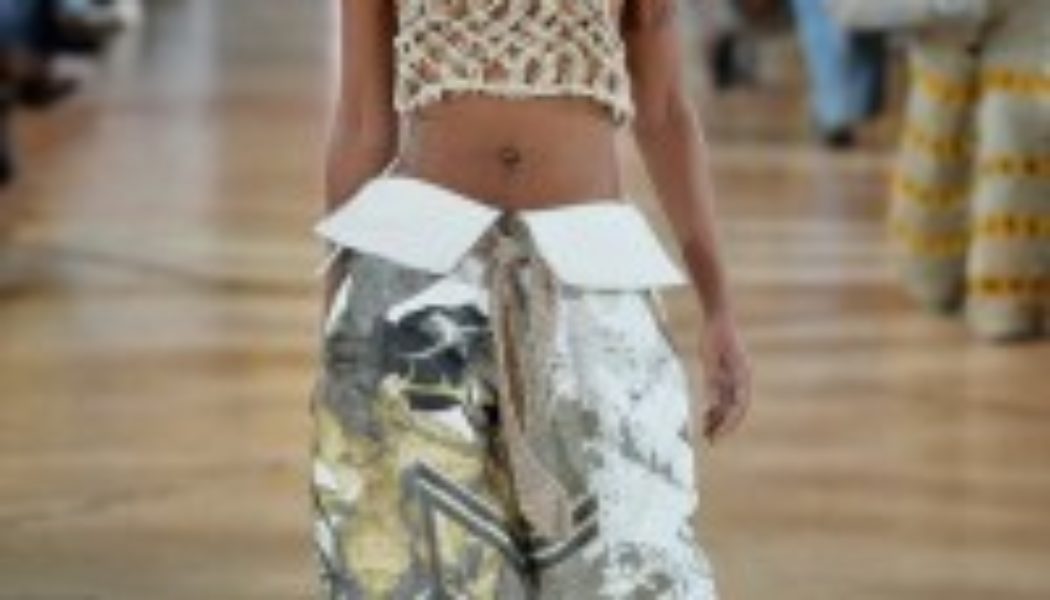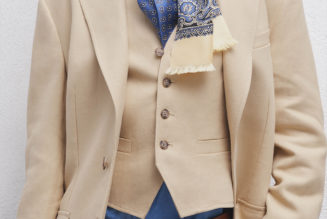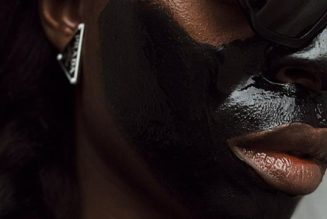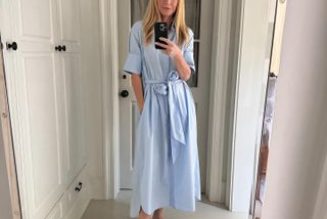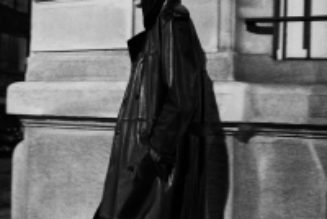LONDON — Central Saint Martins’ MA Fashion graduate show saw students subverting symbols of luxury, challenging what the fashion industry deems as luxurious—and what it doesn’t.
“The course is designed [for students] to go through a journey of learning, reflection, and on a discovery of what their values are and how they can apply them to their practice to make a statement,” course director Fabio Piras told WWD.
Perfect magazine founder, editor, and creative director Katie Grand was charged with picking the winner of the show’s grand prize, the L’Oréal Professionnel Creative Award, handing it to Dhruv Bandil.
Boasting sculptural detailing, cutouts, and textiles he developed himself, his collection came in shades of acid green, vibrant magenta, startling turquoise, and deep purple.
“A lot of inspiration comes from dwelling with divinity in the Indian countryside, and I connected a lot with Jamini Roy’s work,” Bandil said in an interview after the show.
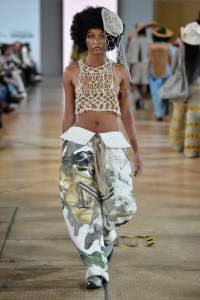
Courtesy of Central Saint Martins
Making farmwear chic was Grace Owusu-Agyemang, who won the Canada Goose Human Nature Award for responsible design.
Characterized as Afro futurism viewed through an agricultural lens, her looks were made from pure hemp, organic cotton, and regenerative cotton that Owusu-Agyemang grew in her native Zambia. Every fiber was entirely traceable, the designer said in an interview, noting that her green thumb began during COVID, when she experimented with growing plants on her balcony.
“Eventually, when I went back home to Zambia where the soil was so fertile, that’s when I started to grow my own food organically. So doing fashion, it only makes sense to start growing my own fibers the right way, the regenerative way,” she explained.
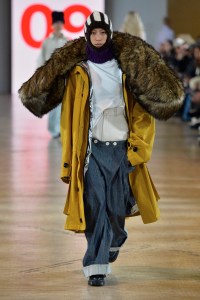
A look representing a single mother Traiceline Pratt took inspiration from.
Courtesy of Central Saint Martins
Traiceline Pratt’s work was ode to six women in his life typically excluded from the luxury industry—a mistress, a businesswoman, a single mother, a thief, and a stripper.
“My collection comes from what each of these women define as luxury and what they were willing to sacrifice for it,” Pratt explained.
Take the outfit representing the single mother, who saw luxury as the ability to provide for her children. There, workwear motifs abounded: a burnt yellow parka was crowned with an oversized faux fur collar and paired with denim trousers.
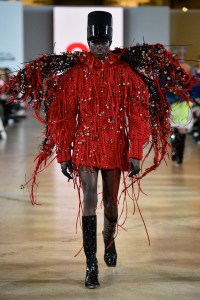
Adorned with bells, keys, and studs, Maximilian Raynor’s jingling collection was a multi sensory affair.
Courtesy of Central Saint Martins
In Maximilian Raynor’s world, purgatory is heaven.
“I was feeling anger towards prevailing patriarchal power systems and how that would extend to the concept of heaven, that somebody at its gates would only be allowing in people who tick a certain box,” he said.
He added: “I devised a manor house where all the people that don’t fit the mold might end up. At first it seems like a deviant, debauched place, full of sinful characters. But by the conclusion, I wanted it to feel that this was actually heaven all along, filled with the best people: women, queer people, people of color.”
Broad-shouldered dresses and jackets represented a fallen angel’s wings, and were made from deadstock tweeds, ginghams, and striped fabrics. Luxury fabrics that would be otherwise discarded were shredded to create a feather-like feel.
“It’s like you’re taking a shredder to a symbol of elitism,” the designer said.
Other highlights included Paula Einfalt Mihovilovic’s playful use of colors, patterns, and silhouettes as well as Mira Maktabi’s sleek tailoring.
